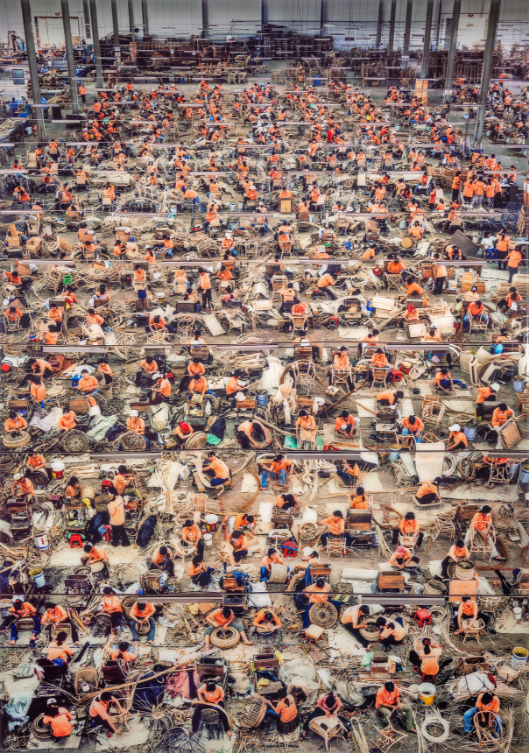Considered one of the most outstanding contemporary art photographers, Andreas Gursky has created a series of large format photographs that have become part of our collective imagination.
Gursky is probably the most prominent artist of the Düsseldorf School, founded by Bernd and Hilla Becher, whose artists also include photographers Thomas Ruff, Thomas Struth and Candida Höfer. Andreas Gursky was the only son of Willy Gursky, a commercial photographer, who, together with his wife Rosemarie, moved from Leipzig, in East Germany, to Essen, in West Germany and then to Dusseldorf, where Andreas Gursky studied at the Art Academy in the 1980s.
While the Bechers’ work is based more on documenting reality, Gursky’s work is characterised by large formats and by manipulating the image digitally in such a way as to create very high-resolution photographs that are fully in focus at all points.
His work in the early nineties was characterised by the high point of view with which he portrays large spaces such as airports, factories, stock exchanges, golf courses or motorways in which, on many occasions, we see crowds of people. As Gursky himself explains, “I call this the democratic view, which allows all the pictorial elements to be as important or unimportant as one another and which completely dispenses with hierarchy. At that moment, my work was arguably as far away from the often quoted ‘decisive moment’ of a Cartier-Bresson as it was possible to be. My ‘decisive moment’ sometimes stretches on for days and months and appears to be reproducible at any given moment, appears to stop time or, one might say, to stretch it into infinity”1.
From 1996 onwards, he moved away from this aerial view to focus on a more frontal point of view. From this point of view, he created a whole series of photographs of shelves for luxury brands such as Prada, depicting the altars of luxury fashion. It is worth remembering that his father was an advertising photographer who worked on assignments for various brands.
In addition to large spaces with people and fashion houses, Gursky’s attention has also turned to nature in many different parts of the world. In this line of work, water has been one of the main themes, as can be seen in the photographs he has taken of the Rhine River in Germany or of the rivers in Thailand. Water has also been the focus of the “Ocean works” series, which returns to the aerial view but, this time, taken from high-definition satellites. The Hortensia Herrero Collection owns an iconic work by Andreas Gursky entitled “Nha Trang” (2004), which has been included in several international exhibitions, such as the one dedicated to him at the Hayward Gallery in London in 2018 and the Istanbul Museum of Modern Art in 2007.
